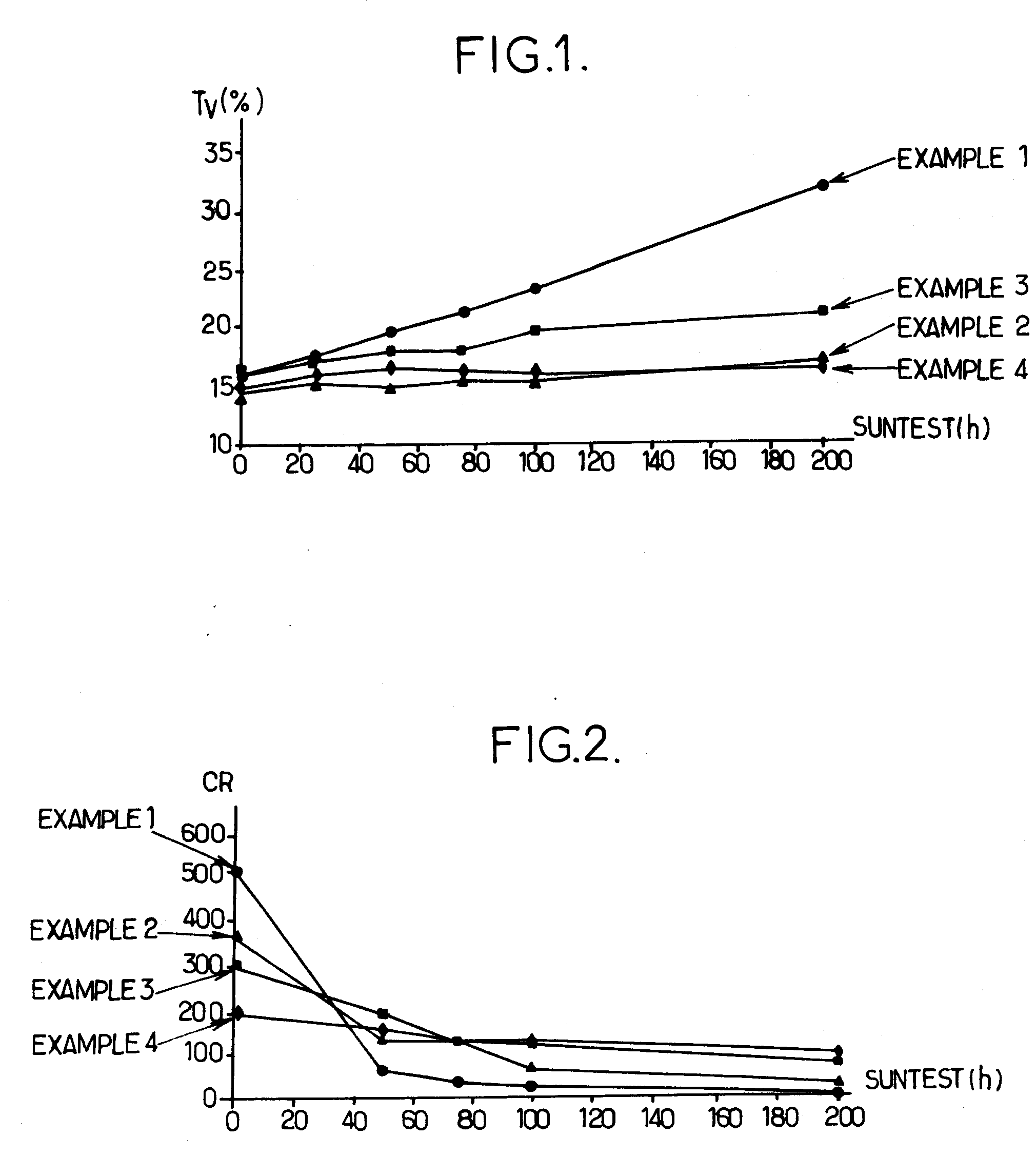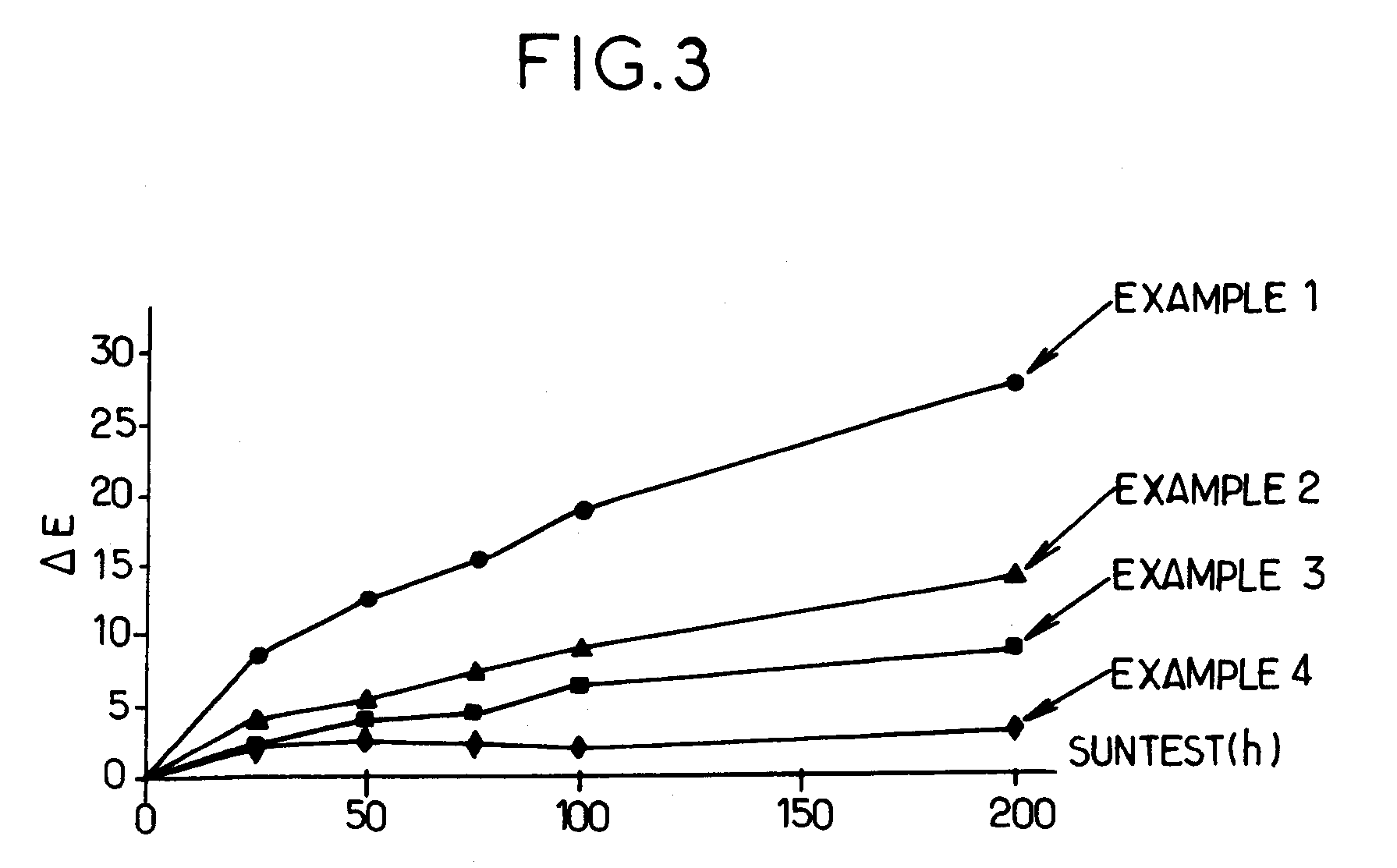Ophthalmic Lenses Comprising a Photodegradation Protection Coating and a Process for Producing Such Lenses
a technology of protection coating and ophthalmology, which is applied in the field of optical articles, can solve the problems of complex phenomena, unstable species and by-products of radical reactions, and inability to easily characterized and identified
- Summary
- Abstract
- Description
- Claims
- Application Information
AI Technical Summary
Problems solved by technology
Method used
Image
Examples
example b
Preparation of a Tinted Ophthalmic Lens with a Photodegradation Protection Coating
[0134] An ophthalmic lens Orma® is tinted by dipping it into an aqueous solution comprising a dye (BPI Molecular catalytic black, from BPI). A tinted ophthalmic lens having a Tv of about 17% is obtained after 10 minutes of immersion (dip-coating) of the lens in the solution maintained at a temperature of about 91° C. to 94° C.
[0135] The resultant ophthalmic lens is protected against photodegradation by deposition of an anti-UV coating according to the invention (see step 2)
[0136] Table 6 shows the “Suntest” results for a standard tinted ophthalmic lens without anti-UV coating.
TABLE 6Tv (%)ΔTv / TvΔE 0 h16.6700.0 50 h17.6661.8100 h18.65123.7150 h19.91195.7200 h21.23277.7
[0137] Table 7 shows the “Suntest” results for a tinted ophthalmic lens according to the invention comprising an anti-UV coating.
TABLEAU 7Tv (%)ΔTv / TvΔE 0 h17.5400.0 50 h17.7610.3100 h17.9620.9150 h18.4051.5200 h18.8782.3
PUM
| Property | Measurement | Unit |
|---|---|---|
| Fraction | aaaaa | aaaaa |
| Fraction | aaaaa | aaaaa |
| Fraction | aaaaa | aaaaa |
Abstract
Description
Claims
Application Information
 Login to View More
Login to View More - R&D
- Intellectual Property
- Life Sciences
- Materials
- Tech Scout
- Unparalleled Data Quality
- Higher Quality Content
- 60% Fewer Hallucinations
Browse by: Latest US Patents, China's latest patents, Technical Efficacy Thesaurus, Application Domain, Technology Topic, Popular Technical Reports.
© 2025 PatSnap. All rights reserved.Legal|Privacy policy|Modern Slavery Act Transparency Statement|Sitemap|About US| Contact US: help@patsnap.com


